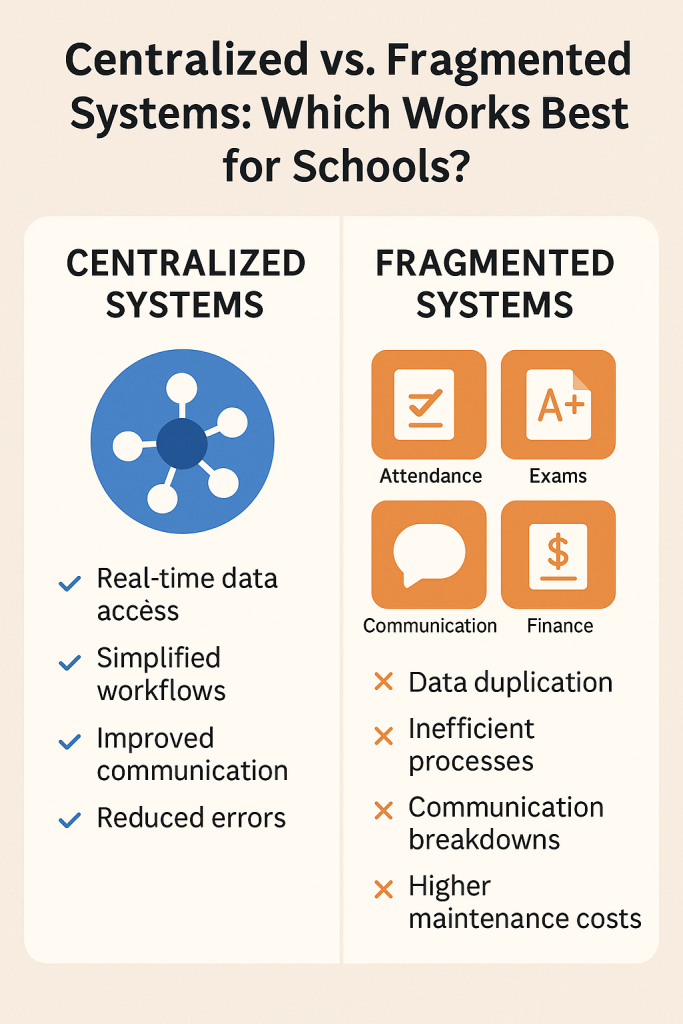Centralized vs. Fragmented Systems: Which Works Best for Schools?

As schools evolve to meet modern demands, technology has become the foundation of efficient administration and learning management. But not all school systems are created equal. Many schools struggle to choose between centralized and fragmented management systems — two approaches that can dramatically impact daily operations, communication, and overall productivity.
At Edcrib, we’ve seen firsthand how the right system architecture can simplify complex processes, improve collaboration, and empower both teachers and administrators.
Understanding the Two Approaches
🧩 Fragmented Systems
In a fragmented setup, schools use separate platforms for different operations — one for attendance, another for exams, a third for communication, and yet another for finance. While this may seem manageable at first, it often leads to data silos, duplication of work, and inconsistent reporting.
Common challenges of fragmented systems include:
- Repeated data entry across multiple platforms.
- Difficulty integrating reports and analytics.
- Communication breakdowns between staff and departments.
- Higher maintenance costs and time spent troubleshooting.
🔗 Centralized Systems
A centralized school management system, on the other hand, unites all operations under one platform — connecting teachers, administrators, parents, and students seamlessly. From student records to billing and analytics, everything runs in one cohesive environment.
Key advantages include:
- Real-time data access across departments.
- Simplified workflows and faster decision-making.
- Improved communication between stakeholders.
- Reduced errors and data redundancy.
- Lower long-term costs through unified infrastructure.
Why Centralization Works Best for Modern Schools
Modern schools need agility and efficiency to stay ahead. A centralized platform like Edcrib ensures that all aspects of school management — academics, finance, attendance, communication, and reporting — are integrated into one intelligent ecosystem.
Here’s how this benefits your school:

- Consistency: All data comes from a single source of truth, ensuring accuracy.
- Scalability: As your school grows, the system adapts easily without juggling multiple tools.
- Transparency: Administrators and parents have real-time visibility into student performance and school activities.
- Productivity: Teachers spend less time on manual work and more time on teaching.
Making the Right Choice
If your school currently operates on multiple disconnected tools, you may already be experiencing the hidden costs of inefficiency — from data errors to communication delays. Transitioning to a centralized management system like Edcrib helps bring everything together under one digital roof, streamlining daily operations and improving collaboration across the board.
Final Thoughts
The debate between centralized and fragmented systems isn’t just about technology — it’s about how your school functions day to day. A centralized platform empowers your institution with simplicity, accuracy, and control, setting the foundation for long-term growth and smarter education management.At Edcrib, we’re helping schools across all levels move beyond fragmented systems and embrace the future of connected, efficient school management.



No Comments yet!